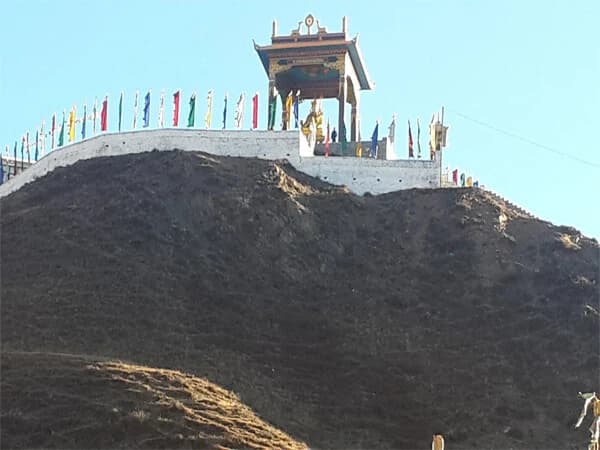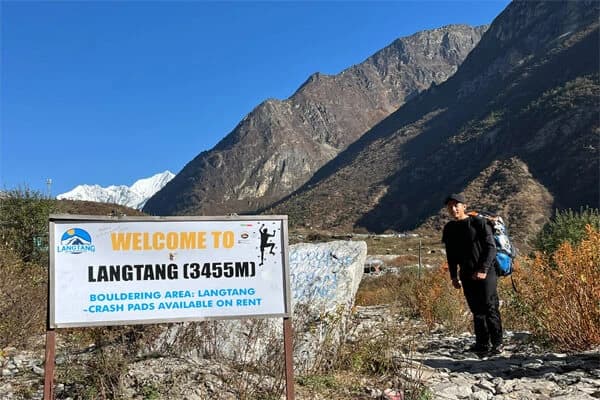Jomsom Muktinath Trek difficulty is a common question for many travelers who are planning this beautiful journey in Nepal. The trek has its own difficulties even though it is renowned for being simpler than other high-altitude Himalayan treks. Therefore, it's critical to know the level of difficulty before you set off on your trip, particularly whether you are a novice, an elderly traveler, or traveling with family.
This blog will tell you exactly what to expect on the path, including how challenging the walk is each day, the types of terrain you'll encounter, and how to get your body and equipment ready for the trip. I will also talk about typical difficulties that can make some parts of the walk less enjoyable, such as altitude, dry weather, and dusty jeep routes. Practical advice on staying safe and comfortable, packing, fitness, and the ideal time to travel will be given to you.
This guide will provide you a realistic and honest image of the demands of the Muktinath tour journey, regardless of whether you are hiking for adventure or traveling to the sacred site of Muktinath for spiritual reasons. The Jomsom Muktinath Trek has the potential to be a physically and emotionally fulfilling experience if the proper attitude and planning are in place.
Jomsom Muktinath Trek at a glance
The Annapurna region of Nepal is home to the brief but stunning Jomsom Muktinath Trek. It passes through the tranquil and arid lower Mustang trek, which is well-known for its Tibetan culture, windswept valleys, and expansive mountain vistas. Compared to other treks in Nepal, this one is easier, making it ideal for novices, families, and even senior citizens.
The Muktinath tour often begins in Pokhara, and to get to Jomsom (about 2,700 meters above sea level), you can either fly or take a jeep. The trail then ascends to the revered location of Muktinath Temple, which is situated at an elevation of about 3,800 meters, passing past the quaint settlement of Kagbeni. For religious and spiritual reasons, Muktinath is regarded as a significant location by many.
Depending on your pace and route, the entire walk can be completed in five to ten days. While some choose to walk the entire distance, others choose to bypass the more difficult portions by taking flights or jeeps. With vistas of the Nilgiri and Dhaulagiri peaks, the trail is wide, dry, and less congested. This journey offers a short and convenient route that combines spiritual significance, cultural experience, and natural beauty.
How Difficult Is Jomsom MuktinathTrek in Reality?
Many people consider the Jomsom Muktinath Trek to be among the most straightforward trekking in Nepal, particularly when contrasted with more strenuous and lengthy routes like the Annapurna Circuit or Everest Base Camp. However, "easy" does not negate the necessity for preparation. Let's examine the simpler aspects of this expedition and the things you should still prepare for.
No Climbing Experience Needed
The Jomson trekking consists of following well-maintained paths that link roads, villages, and temples. You don't require ropes or climbing experience, and there aren't any tricky or high climbs. The majority of your trek will be through serene villages, arid river valleys, and breathtaking mountain landscapes. The trail is manageable for novices, senior citizens, and families with children because it is mostly level or gradually sloping.
Limited Time and Adaptable Choices
The Muktinath Jomsom trek is regarded as easy trekking routes since, depending on your trek route and pace, it can be completed in 5 to 10 days. Between some locations, such as Pokhara and Jomsom, you can take a jeep or a plane if you're exhausted or pressed for time. This cuts down on walking time and helps steer clear of challenging areas.
A moderate altitude but still high
At about 3,800 meters (12,467 feet), Muktinath is the trek's highest point. Some people may have modest altitude effects, such as fatigue or headaches, because this is high enough. However, the risk of severe altitude sickness is minimal because you sleep at lower heights, such as Jomsom (2,700m), and you gain height gradually.
The Muktinath Trekking Trail Conditions and Weather Are Controllable
Particularly in the Lower Mustang area, the trail is open and dry. This implies there won't be any hazardous bridges or slick woodland trails. However, particularly in the afternoon, it can be dusty and windy. It can be beneficial to cover your face or use a scarf.
The weather is typically clear and stable during the busiest seasons (spring and fall), which makes the walk simpler and more pleasurable. In conclusion, the trek is easy to moderate. All things considered, the Jomsom Muktinath trail is a low-stress, low-risk Himalayan adventure. Almost everyone who enjoys walking and the outdoors activities may participate with a less preparation and physical fitness. Simply take your time and relish the trip.
Main Challenges to Be Aware Of
It is generally accurate to say that Trek to Jomsom Muktinath is an easy trek in Nepal. The trail to muktinath Jomsom is not too long, exhausting days like Manaslu Circuitor high ascents like Everest three Pass trek. However, "easy" does not equate to "effortless." If you are not ready, there are still a few things that could surprise you. Let's discuss them.
The Effects of High Altitude During the Jomsom Muktinath Trekking
Altitude can still have an impact on you even though the walk isn't that high, particularly in the vicinity of Muktinath, which is 3,800 meters (12,467 ft) above sea level. That is high enough for some people to experience the headache, fatigue, nausea, and difficulty sleeping that are signs of acute mountain sickness (AMS). The trail climbs swiftly, which is the issue.
Some individuals drive halfway or take a direct flight to Jomsom, which doesn't allow the body adequate time to adapt. For this reason, it's crucial to take it easy on the ascent, stroll slowly, and drink lots of water.
Rest if you start feeling ill. Go down if it becomes worse. Although AMS is uncommon on this trek, it's wise to be mindful of and considerate of the altitude.
Wind and Dust – The Afternoon Struggle
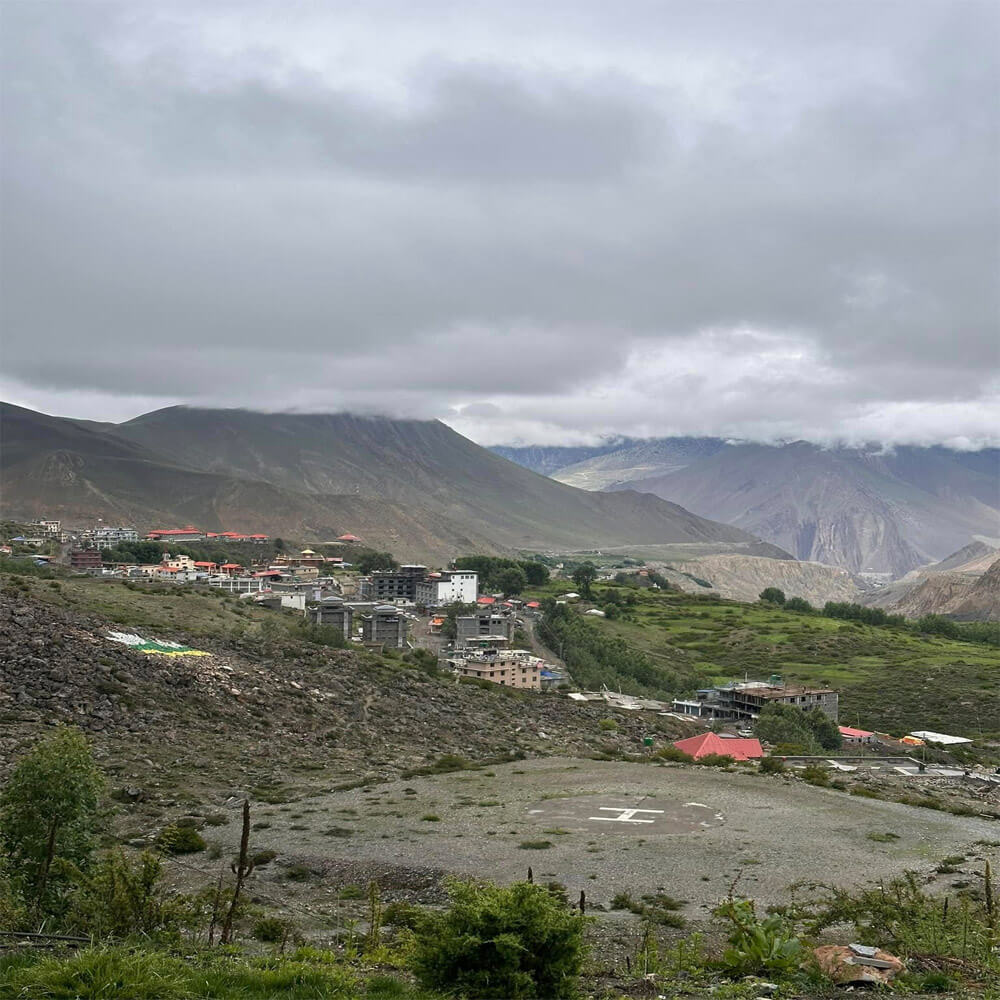
Many hikers are surprised to learn that Jomsom and the Kali Gandaki Valley are extremely windy, particularly in the afternoon. The wind begins to roar through the gorge as the sun warms the valley. The breeze is forceful and dry, not merely mild. This wind might make hiking uncomfortable and slow you down if you're going later in the day.
Even worse, dust from the road and trail is blown by the wind, particularly when motorcyclists or jeeps are passing. This can enter your throat, nose, and eyes. This section irritates some hikers the most.
What can you do whe you are on the Jomsom Muktinath Trek?
- When the wind is quiet in the morning, begin your walk.
- Cover your face with a scarf or buff.
- To protect your eyes, put on some sunglasses.
- The correct equipment and a little preparation can go a long way.
Dry Air and Dehydration
Due to its location in the rain shadow, the Jomsom Muktinath Hiking has nearly constant dryness throughout the year. The air feels different here; it's quite dry throughout the day and cold in the morning and evening. Even if you're not heated, you lose water rapidly as you breathe and perspire.
Because it's colder at higher elevations, many hikers neglect to frequently drink water. However, dehydration can exacerbate the effects of altitude and cause cramps and exhaustion.
To be safe:
- Keep a hydration pack or water bottle with you.
- Even if you are not thirsty, drink water frequently.
If you feel faint or lightheaded, add electrolytes or rehydration salts.
Uneven Terrain and Loose Stones
Despite being rated as "easy trek in Nepal," the trail has some rocky, dry, and uneven sections, particularly the section between Kagbeni and Muktinath. You may tread on dry riverbeds, gravel pathways, or loose stones. Even though it's not harmful, it can be taxing on the ankles and knees, particularly when going downhill.
These parts may feel more difficult than you anticipate if you have joint problems or are not accustomed to walking on trails. Additionally, you must exercise caution because there are sections of the trail where motorbikes and jeeps share the road.
Tips:
- Put on sturdy hiking boots with traction and ankle support.
- To relieve knee strain, use hiking poles.
- Take brief rests, particularly when descending a slope.
Shared Roads and Vehicle Distractions
The fact that jeeps and motorcycles utilize some of the trail, particularly between Jomsom and Muktinath, is one of the trek's few drawbacks. This indicates that you occasionally walk next to or on the same path as cars.
Particularly when you're taking in the serene mountains, the noise, dust, and sporadic waiting can be annoying. Although it's not hazardous, in certain places it detracts from the "pure trekking" experience.
What are you able to do when you are on the Jomsom Muktinath trek?
Whenever feasible, choose side trails. Some pass through fields or communities and are marked.
When there are less cars on the road, start early in the day.
Keep to the side of the road and give safe passage to jeeps.
Cold Mornings and Nights
Even in spring or fall, Jomsom and Muktinath can have chilly mornings and evenings despite their frequently sunny and pleasant days. In the higher villages in particular, the temperature can dip to almost freezing.
Although this might not be harmful, it can make mornings unpleasant if you're not wearing warm clothing. Your energy levels for the next day can be impacted by cold hands, feet, and a restless night.
How to keep warm:
- Bring or rent a warm sleeping bag in Pokhara.
- Put on layers, such as a down jacket, fleece, and thermals.
- Little things like woolen socks, a hat, and gloves have a tremendous impact.
Limited Acclimatization Days During the Muktinath Trekking
The Jomsom Muktinath trip is often completed in a few days; some even take jeeps to Muktinath and then walk back. Although this saves time, it also lessens the opportunity to fully appreciate the trip and raises the possibility of altitude problems.
You lose out on the charm of Marpha hamlet, the serenity of Jharkot, and the beauty of Kagbeni if you hurry. Additionally, your body has less time to adapt to the altitude change. Take 7-10 days rather than just 3-4 if you have the time. Your body will appreciate it, and your encounter will be more fulfilling.
Religious Festivals and Crowds
Both Buddhists and Hindus consider Muktinath to be a hallowed place of pilgrimage. The path and temples may become congested with pilgrims from India and Nepal during holidays like Janai Purnima or Dashain. Trails may feel more crowded than normal, and guesthouses may be completely booked. Although this isn't precisely a "difficulty," it does have an impact on lodging availability, trail tranquility, and total cost at busy times.
If you'd rather have a peaceful experience, avoid festival weeks by checking the Nepali calendar. Or schedule your expedition during these periods, but make reservations in advance, if you're interested in the local way of life.
Though "easy" is still a relative term, the Jomsom Muktinath trek is regarded as one of Nepal's simpler routes. You will encounter cold nights, rough routes, dry winds, and high altitude walking. But with the correct attitude and planning, these are doable.
The majority of hikers, regardless of age or experience level, finish this walk with a high level of pleasure. Additionally, being aware of what to anticipate makes the journey more enjoyable.
How to Prepare for the Jomsom Muktinath Trek
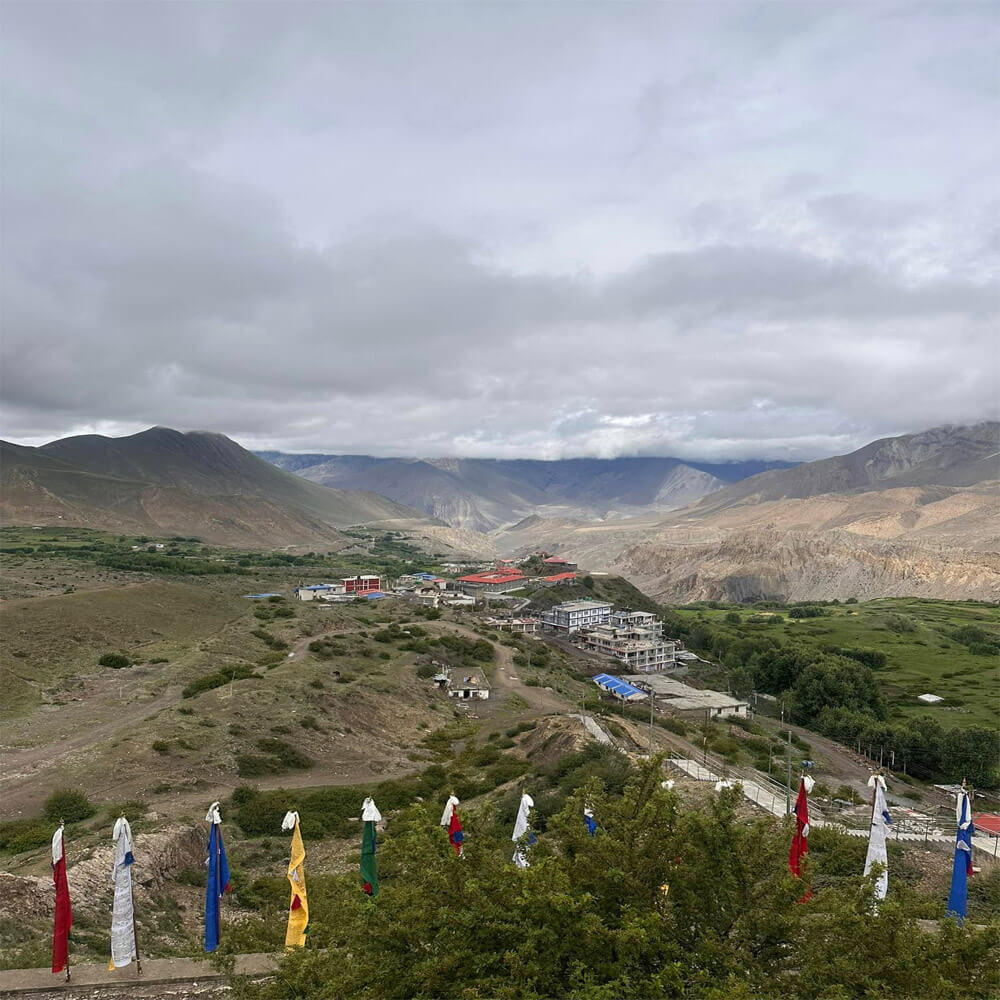
Even though the Jomsom Muktinath Trekis regarded as one of Nepal's easiest treks, planning is still important. The high altitude, dry air, and dusty landscape can be exhausting, especially for novices, even though the trail is neither very lengthy or steep. You may increase your enjoyment of the trip and steer clear of typical issues by following a few easy procedures before the walk.
Start with Light Fitness Training
Although it is not necessary to be an athlete to complete this journey, it is really beneficial to have some basic fitness. Four to six hours a day will be spent walking on rocky trails, occasionally uphill. Start with short hikes or daily walks a month before to your trek.
To become acclimated to the feel, try walking while carrying a little bag. Climb stairs or hills if you live close by to strengthen your legs. Increasing your stamina can also be achieved by doing some mild cycling or jogging a few times each week. Your body will be ready for walking for multiple days in a row with this type of exercise.
Acclimatization and Hydration Tips
At almost 3,800 meters, Muktinath Temple is one of the highest places on this walk. Some persons may experience altitude sickness symptoms at this level, such as headaches, fatigue, or difficulty falling asleep. The greatest defense against this is to take it slow, stay hydrated, and get enough of sleep.
Take your time on the hike. If at all feasible, stay an additional day in Jomsom or Kagbeni before traveling to Muktinath. Your body adjusts to the thin air more easily as a result.
It's crucial to consume three to four liters of water each day. Because of the dry air, you could easily become dehydrated without noticing it. To stay safe and avoid purchasing plastic bottles, always carry a reusable water bottle and use a filter or water-purifying tablets.Bring the Proper Clothes and Equipment
In the Jomsom and Muktinath area, the weather can change rapidly. While it is sunny during the day, the mornings and evenings are windy and cold. Packing light layers will allow you to change your clothes as needed.
Bring comfortable walking shoes, a hat and gloves for warmth, and a jacket that is both waterproof and windproof. Don't wear brand-new shoes; instead, wear ones that have been broken in. Because the sun is intense at high altitudes, even in cool weather, a hat, sunglasses, and sunscreen are also essential.
Additionally, pack a flashlight or headlamp, some snacks, and a tiny first aid kit. If you hire a porter, you can leave the heavier weight to them and merely carry a little day bag.
Hire a Guide or Porter for Comfort
Even though the Jomsom Muktinath trek is clearly defined and reasonably simple, it can be more pleasurable and seamless to have a local guide. In addition to helping with tea house reservations and sharing local stories, a guide can also offer assistance with medical issues. Hiring a porter lets you move freely without carrying a big bag, which is especially useful for families or senior hikers.
It doesn't take much to prepare for the Jomsom Muktinath Trek, but doing it correctly will make your journey much more memorable, safe, and pleasurable. Every step you take will be rewarded on this lovely journey.
When Is the Best Time and less difficult for the Jomsom Muktinath Trek?
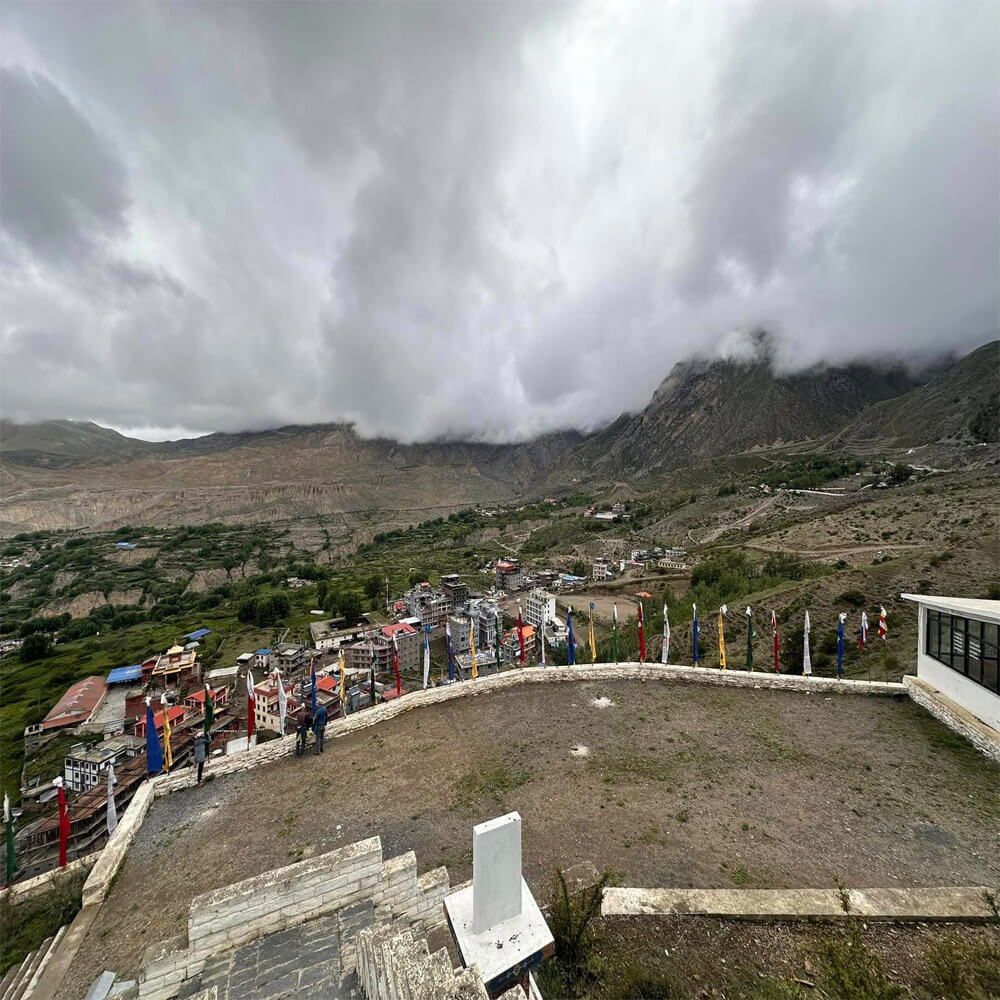
Timing is one of the most crucial considerations while organizing a journey to Jomsom and Muktinath. So Autumn and Spring are the best time for Jomsom Muktinath Trek. The trail is open all year round, but the conditions are significantly better in some months than others. Selecting the appropriate season can improve the comfort, safety, and enjoyment of your trip.
Jomsom Muktinath Trek in Spring season (March-May)
One of the best seasons to hike to Jomsom Muktinath is in the spring. Clear skies and comfortable daytime temperatures characterize the weather during these months, which is often dry and stable. Particularly in the lower portions of the hike, the trail comes to life with green slopes and rhododendrons in bloom. Higher elevations also make it easier to reach Muktinath Temple because there is less snow there.
Trekkers and pilgrims alike like this time of year, yet the trail is seldom overly congested. This time of year offers striking and striking vistas of the Annapurna and Dhaulagiri peaks. Spring is a great season to visit if you like mild weather and want to take in both culture and environment.
Jomsom Muktinath Trek in Autumn season (September to November)
Jomsom Muktinath trek also called Lower Mustang trek is not an exception to the rule that autumn is the best time of year to trek in Nepal. Clear monsoon showers cause the skies to turn brilliant blue and the air to become fresh. It's cold at night and pleasant for walking during the day, much like spring.
The opportunity to take in Nepal's largest celebrations, such as Dashain and Tihar, adds even more specialness to fall. These celebrations give the villages along the way happiness and vitality, giving your hike a deeper cultural dimension. For those seeking the greatest weather and a lively local vibe, this time of year is perfect.
Jomsom Muktinath Trek in Winter Season (December to February)
Trekking in the winter is more difficult, but it is still possible. Particularly at night and in the early morning, the temperature drastically lowers. At about 3,800 meters, Muktinath can get quite cold, even freezing, but snow is less usual in Jomsom. A decent sleeping bag, appropriate warm clothing, and preparedness for chilly nights are all necessary.
Nevertheless, winter has a certain allure. The walk offers serene seclusion and is mostly deserted. This can be a very lovely time of year to visit if you're seeking a peaceful spiritual experience and are able to withstand the cold.
Jomsom Muktinath Trek in Monsoon season (June to August)
Nepal trekking is not advised during the monsoon season. Nevertheless, Jomsom and Muktinath receive less rainfall than other areas since they are located in the Himalayan rain shadow. Trekking may still be feasible during the monsoon season, although the route going up to the area particularly from Pokhara to Tatopani or Kagbeni, may be muddy, slick, and vulnerable to landslides. Views of mountains may also be hidden by clouds. For adventurous trekkers who don’t mind occasional rain and want to avoid crowds, it’s still doable but with some extra caution.
Who Should Do the Jomsom Muktinath Trek?
Jomsom Muktinath Trek is an excellent option for all age group tour. For novices who wish to hiking in Himalayas for the first time, it is ideal. For most individuals, the altitude is manageable and the path is not very steep, especially if you walk slowly and take stops.
Families with kids and senior citizens will love this excursion as well. You can change the path based on your energy level because you can choose to drive, fly, or stroll. Many people employ porters or pack light, so you don't have to carry heavy bags either.
This walk is very popular with religious travelers. Both Buddhists and Hindus consider the Muktinath Temple to be a sacred site. Every year, a large number of pilgrims gather here in search of blessings, tranquility, and prayer.
This walk is a fantastic choice if you're searching for a quick, cultural, and picturesque hike that doesn't call for climbing expertise or exceptionally high levels of endurance.
Some Frequently Asked Questions
Does trekking in Jomsom and Muktinath require a visa?
Yes. Nepal tourist visa is required for all foreign visitors, with the exception of Indian nationals. You can apply online prior to your travel or pick it up at the Kathmandu airport when you arrive. A $30 USD 15-day visa is sufficient for the Jomsom Muktinath trip.
Are there any permits required for this trek?
Yes. Two permits are required:
- ACAP (Annapurna Conservation Area Permit) costs about $30 USD.
- The Trekkers' Information Management System (TIMS) card costs about $20 USD.
In Kathmandu or Pokhara, these permits can be obtained via the tourism office or a trekking service.
How can I get to the trek beginning point?
Pokhara is where most trekkers begin. From there, you can Fly to Jomsom (20–25 minutes). After taking a bus or vehicle there, walk from Tatopani or Jomsom. To get to Jomsom, some hike a portion of the Annapurna Circuit.
How much does it cost to fly to Jomsom?
The cost of a one-way ticket from Pokhara to Jomsom is approximately $160 to $190 USD. Seasons and baggage weight may have an impact on prices. Strong winds later in the day make early morning flights ideal.
Can a jeep be used in place of a plane?
Yes. From Pokhara, you can travel to Jomsom or Kagbeni in a private or shared jeep. Depending on the type of vehicle and group size, the trip takes 10 to 12 hours and costs anything from $25 to $150 USD. Despite the bumps, there are beautiful views to see along the route.
Conclusion: Jomsom Muktinath Trek Difficulty
The Jomsom Muktinath Trek is one of the easiest and most rewarding treks in Nepal. Most persons with a basic level of fitness can handle the altitude and the paths are not too steep. Without the proper planning, the dry air, strong gusts, and shifting weather can still be difficult.
You may travel in safety and comfort if you work with our knowledgeable experts at Nepal Trekking Routes. They offer qualified guides, careful preparation, and adaptable itineraries that fit your schedule. This walk offers a tranquil journey through breathtaking landscapes and rich culture, without being very difficult to finish, whether you're a beginner, a family, or a spiritual traveler.





.webp&w=1200&q=75&dpl=dpl_4U3CaZUV3Y5iKdBNPJmVMATJy3AB)
